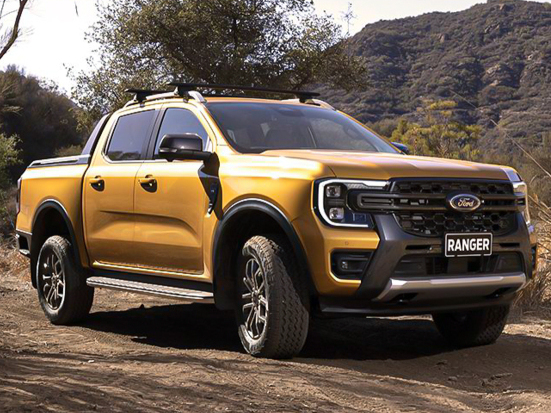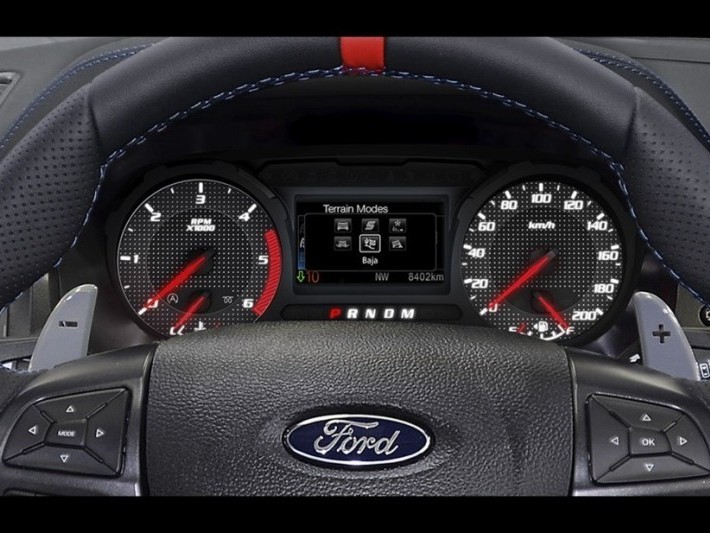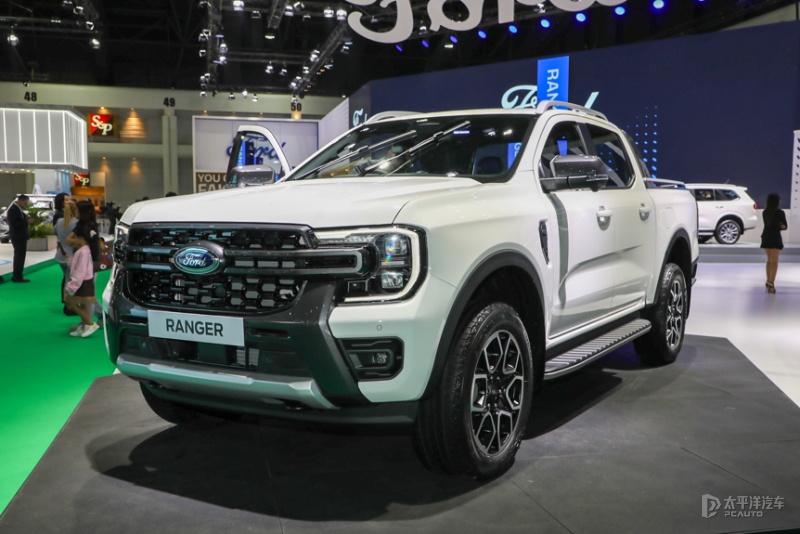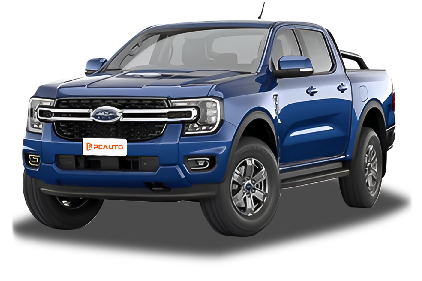Q
What is the fuel consumption of the Ford Ranger 2018?
The fuel economy of the 2018 Ford Ranger varies depending on the engine configuration and driving conditions. Models equipped with the 2.2-liter Duratorq four-cylinder diesel engine have a combined fuel consumption of approximately 7.6 liters per 100 kilometers, while the 3.2-liter five-cylinder diesel version averages around 8.5 liters per 100 kilometers. Actual fuel consumption may fluctuate based on load, road conditions, and driving habits. This pickup truck features advanced fuel injection technology and a low-resistance transmission system, balancing power and fuel efficiency, making it suitable for both city commuting and long-haul transportation. To further optimize fuel economy, it is recommended to perform regular vehicle maintenance, maintain proper tire pressure, and avoid aggressive acceleration or sudden braking. The diesel engine's high torque at low RPMs makes it particularly well-suited for scenarios involving frequent stops and starts or high load requirements, while the Ranger's intelligent start-stop system also helps reduce unnecessary fuel consumption during idling.
Special Disclaimer: This content is published by users and does not represent the views or position of PCauto.
Related Q&A
Q
How long will a 2018 Ford Ranger last?
The lifespan of a 2018 Ford Ranger largely depends on maintenance and driving habits. With regular use and proper upkeep, it can easily hit over 300,000 kilometers—think 15 years or more on the road. The 2.2L and 3.2L diesel engines in this pickup are known for their durability, but you’ve got to stick strictly to the 10,000-kilometer oil and filter change intervals. Keeping the Diesel Particulate Filter (DPF) clean is especially critical for long-term reliability. I’d recommend focusing on undercarriage rust protection too, since tropical climates can speed up metal corrosion. And don’t skip regular checks on transmission fluid and the 4WD system (if equipped)—those small steps really help extend mechanical life. If you’re buying used, always dig up the full service history. Pay extra attention to past repairs on the turbocharger and fuel injection system. If it’s mostly used for short city trips, take it on the highway occasionally to help regenerate the DPF and avoid carbon buildup. In this pickup class, electronic glitches and aging rubber components are common repair items. Swapping out wear parts like suspension bushings early on goes a long way in keeping the ride quality solid.
Q
How big is the 2018 Ford Ranger?
The 2018 Ford Ranger is a midsize pickup truck with dimensions of 5359mm in length, 1850mm in width, and 1818mm in height, along with a 3220mm wheelbase. These proportions translate to a roomy cabin and a practical cargo bed, which measures 1549mm long, 1560mm wide, and 511mm high—perfect for hauling gear or tackling outdoor adventures. Under the hood, you've got two diesel engine choices: a 2.2-liter and a 3.2-liter. Both deliver solid power and good fuel economy, making them suitable for daily commutes and long highway drives alike. The Ranger doesn't skimp on tech either, coming equipped with features like the SYNC 3 infotainment system and a range of driver-assist functions that boost both convenience and safety. And let's not forget its off-road chops—with decent ground clearance and 4WD, it can handle a variety of terrains. For pickup lovers, the Ranger's durability and versatility are big selling points. Whether it's for work duties or family trips, this truck pulls its weight, making it a really practical choice.
Q
What oil does a 2018 Ford Ranger take?
For the 2018 Ford Ranger, it's recommended to use fully synthetic 5W-30 motor oil that meets Ford's WSS-M2C913-D specification. This type of oil adapts better to local climate conditions, ensuring the engine maintains good lubrication performance even in high-temperature environments while quickly forming a protective oil film during cold starts. If you frequently drive with heavy loads or take long trips, it's advisable to shorten the oil change interval to 8,000-10,000 kilometers. For regular driving, you can follow the official recommendation of a 15,000-kilometer service interval. It's important to note that different engine models may have slight variations. For example, the 2.2L Duratorq diesel engine and the 3.2L version have higher requirements for oil cleanliness, so it's best to choose oils with C3 or A5/B5 certifications. When selecting oil, check if the product has API SN or ACEA A3/B4 certifications, as these oils contain more anti-wear additives and effectively protect the turbocharging system. If the vehicle has driven over 100,000 kilometers, consider switching to 5W-40 viscosity oil to compensate for increased internal engine clearances. Regularly checking the oil level is crucial, especially since older models might experience slight oil consumption. It's recommended to keep a 1L bottle of the same oil type in the trunk as a backup.
Q
How many cylinders does a 2018 Ford Ranger have?
The engine configuration of the 2018 Ford Ranger depends on the specific trim level. The common 2.2-liter Duratorq turbo diesel engine features an inline-four cylinder design, while the more powerful 3.2-liter Duratorq turbo diesel comes with an inline-five cylinder setup. These two powertrains each have their own advantages in terms of torque output and fuel efficiency, catering to different driving needs.
In modern pickup trucks, the choice of cylinder count usually relates to usage. Four-cylinder engines prioritize fuel efficiency for daily commuting, while five or six-cylinder models are better suited for heavy-duty hauling or off-road scenarios. The Ranger's engine technology also includes variable geometry turbocharging and high-pressure common rail fuel injection systems, which effectively enhance power response and reduce emissions.
It's worth noting that the number of cylinders is just one aspect of performance; actual driving experience also needs to consider factors like transmission tuning and chassis suspension. The Ranger's off-road trim levels additionally come equipped with electronic differential locks and terrain management systems, further enhancing its capability to tackle complex road conditions.
Q
What is the fuel consumption of the 2018 Ford Ranger?
The fuel economy of the 2018 Ford Ranger varies depending on engine configuration and driving conditions. Models equipped with the 2.2-liter Duratorq turbo diesel engine have a combined fuel consumption of approximately 7.6 liters per 100 kilometers, while the 3.2-liter five-cylinder diesel version is slightly higher at around 8.5 liters per 100 kilometers. Actual fuel consumption may fluctuate based on load, road conditions, and driving habits. This pickup is popular for its ruggedness and versatility, with the diesel engine's low-end torque feature making it suitable for hauling or off-roading, while still offering decent fuel efficiency for daily driving. To optimize fuel economy, it's recommended to perform regular vehicle maintenance, keep tire pressure at the proper level, and avoid aggressive acceleration or overloading. Among its peers, the Ranger's fuel economy sits at an above-average level, which matches its power performance and practicality, making it a solid choice for users who need to balance work and personal use.
Q
What are the trim levels for the Ford Ranger 2018?
The 2018 Ford Ranger comes in several trim levels to meet different needs: XL, XLS, XLT, and the top-of-the-line Wildtrak. The XL is the base model, packing essential features like manual air conditioning and steel wheels—perfect for budget-conscious buyers who need a reliable workhorse. Step up to the XLS, and you get upgrades like aluminum wheels, fog lights, and extra storage space, boosting both utility and looks. The XLT takes it further with the SYNC 3 infotainment system, a rearview camera, and nicer interior materials, making it a better fit for folks wanting more comfort. At the top, the Wildtrak flagship brings a unique sporty body kit, leather seats, dual-zone automatic climate control, and advanced driver-assist tech—ideal for those craving high performance and a premium feel. All trims offer 2.2L and 3.2L diesel engine options, paired with 6-speed manual or automatic transmissions, delivering solid power and great fuel efficiency. Knowing these differences helps buyers pick the right Ranger for their needs and budget, and its durability and versatility keep it a hit in the pickup truck market.
Q
What is the safety rating of the 2018 Ford Ranger?
The 2018 Ford Ranger excels in safety performance, earning high scores from multiple authoritative evaluation agencies, including a 5-star safety rating in the ASEAN NCAP tests. This achievement fully demonstrates its outstanding performance in collision protection, active safety technology, and child safety. The vehicle is equipped with a range of safety features such as 6 airbags, Electronic Stability Control (ESC), Anti-lock Braking System (ABS), and Hill Start Assist, providing comprehensive protection for both drivers and passengers. Additionally, its robust body structure and advanced safety design have also earned it a solid reputation. For consumers who prioritize safety performance, the 2018 Ford Ranger is a worthy consideration. After all, safety ratings are an important measure of a vehicle's overall performance, and a 5-star rating typically indicates that the vehicle leads its class and can meet the safety needs of daily driving and long-distance travel.
Q
Are 2018 Rangers reliable?
The 2018 Ford Ranger holds up pretty well in terms of reliability. This pickup comes with tried-and-true 2.2L and 3.2L diesel engines that deliver steady power, making it a solid choice if you regularly haul cargo or take long drives. The transmission pairs nicely with the engine, and maintenance costs are reasonably manageable. Inside, there's plenty of space, the features are practical, and the chassis feels sturdy. Its off-road capability sits above average for the class, and day-to-day breakdowns are few and far between. Still, it's a good idea to keep an eye on the turbocharging system and electronics—they can throw minor issues from time to time. On the used market, the 2018 Ranger holds its value decently, which says something about how consumers trust its quality. It’s worth noting, though, that a pickup’s reliability leans heavily on how you maintain it and where you drive it. Stick to the official service schedule and use genuine parts, especially with diesel models—pay extra attention to the fuel system and filters. If you’re mostly city driving, the 2.2L version is more budget-friendly, but if you’re经常 hauling heavy loads or hitting the trails, the 3.2L is the better bet. All in all, this truck works well for folks who need something versatile for both work and family. As long as you keep up with regular maintenance, it’s a dependable ride you can count on.
Q
How many miles will a 2018 Ranger last?
The durability of the 2018 Ford Ranger depends on regular maintenance and driving habits. Under normal conditions, this pickup can last between 200,000 to 300,000 miles (approximately 320,000 to 480,000 kilometers). With regular oil changes, transmission fluid and differential fluid replacements, and proper maintenance of the cooling and braking systems, its lifespan can even be extended further. Diesel models, thanks to their more robust engine construction, are generally more durable than gasoline versions, though attention must be paid to cleaning the diesel particulate filter. The Ranger's body-on-frame construction and tough chassis design handle various road conditions well, but prolonged use in harsh environments can accelerate component wear. It's recommended to inspect the timing belt or chain every 100,000 kilometers, while also keeping an eye on the suspension system and four-wheel-drive components. Many owners report good reliability with the engine and transmission, though minor electronic glitches may become more frequent as the vehicle ages. When buying a used Ranger, check maintenance records carefully to avoid accident-damaged or flood-affected vehicles. Avoid prolonged high-load operation during daily driving, as this can significantly extend engine life.
Q
What is the specs of the 2018 Ford Ranger 2.2 XL?
The 2018 Ford Ranger 2.2 XL is powered by a 2.2-liter four-cylinder turbocharged diesel engine, churning out 160 horsepower and a peak torque of 385 Nm. It pairs with either a 6-speed manual or 6-speed automatic transmission, offering both rear-wheel drive and four-wheel drive options—ideal for daily commuting and light off-roading. Measuring 5359mm×1850mm×1818mm with a 3220mm wheelbase, the cargo bed stands at 1549mm×1560mm×511mm, boasting a load capacity of around 1 ton. In terms of features, it comes with manual air conditioning, an FM radio, USB ports, 2 airbags, and ABS+EBD—focusing on practicality and durability. Fuel efficiency is a strong suit too, with combined city fuel consumption around 8-9L/100km and highway cruising dropping to 6-7L/100km. Keep in mind, regular maintenance is key for the diesel engine’s performance—we recommend changing the oil and filters every 10,000 km and checking the turbocharging system. While competitors like the Toyota Hilux and Isuzu D-Max offer similar setups, the Ranger’s chassis tuning leans more toward on-road comfort, making it a solid pick for frequent long-distance drivers.
Latest Q&A
Q
Is the 2020 Volvo XC90 safe?
The 2020 Volvo XC90 shines when it comes to safety. It's packed with a ton of active and passive safety tech, including things like City Safety, automatic emergency braking, lane keeping assist, blind spot monitoring, and even automatic cross-traffic braking. All this stuff really helps cut down on accident chances. The XC90 scored a five-star rating in Euro NCAP crash tests, which says a lot about how well it protects passengers. The body's built with high-strength steel, so it soaks up and spreads out crash energy effectively. On top of that, it comes standard with seven airbags, including a knee airbag, giving everyone inside solid protection. What's cool is that Volvo has always made safety its core brand value—their safety tech has been tested over the years, so you know it's reliable. If safety is a top priority for you, this is a solid pick. When you're shopping for a luxury SUV, besides brand and features, safety should be a big factor too. After all, it directly affects you and your family's lives.
Q
Is the XC90 made in China?
The Volvo XC90 isn't currently produced in China. Its main production line is at the Torslanda Plant in Sweden, which supplies global markets, including right-hand drive models. While Volvo does have a manufacturing facility in Daqing, China, that builds some models, the XC90 isn't among them. For consumers, knowing where a vehicle is made can offer insights into production standards and supply chain characteristics. For instance, models from the Swedish plant adhere to Europe's stringent manufacturing processes and environmental requirements. Additionally, as a global luxury brand, Volvo implements a unified quality control system across all its factories, ensuring that safety and reliability meet the brand's standards, regardless of production location. It's worth noting that when shopping for a luxury SUV, beyond the country of origin, factors like powertrain options, intelligent driving assistance systems, and after-sales warranty policies often better reflect a vehicle's overall value than just where it's built.
Q
How much is a 2020 Volvo XC90 worth?
The current used car price for a 2020 Volvo XC90 ranges from approximately RM200,000 to RM300,000, depending on the vehicle's condition, mileage, trim level, and whether it's still under the original factory warranty. The higher-spec T8 plug-in hybrid models or those equipped with the Polestar performance upgrade package typically cost 10% to 15% more than the standard T5 or T6 versions. This SUV is known for its Scandinavian luxury design, standard-fit City Safety active safety system across the range, and spacious 7-seat layout. It holds its value better than comparable European SUVs in the used market, though it's important to check for complete service records—especially since maintenance costs for the air suspension and hybrid system can be relatively high. Before purchasing, it's advisable to check the vehicle history report through Volvo Selekt's official certified pre-owned channel or commission a third-party inspection agency to assess the mechanical condition. Competitors in the same price bracket, such as same year BMW X5 or Mercedes-Benz GLE models, are similarly priced, but the XC90 stands out with its safety features and use of eco-friendly materials, making it ideal for buyers prioritizing family travel safety.
Q
Is the 2020 Volvo XC90 a good car?
The 2020 Volvo XC90 is a luxury SUV with excellent all-around performance. Its Scandinavian minimalist design language, paired with high-quality interior materials, creates a unique premium atmosphere. Safety has always been the core strength of this vehicle, with the City Safety system as standard across the range, including features like automatic emergency braking and lane keeping assist. It consistently earns top ratings in third-party crash tests. In terms of powertrain, it offers three options: T5, T6, and T8. The T8 plug-in hybrid version balances eco-friendliness and performance, with an all-electric range of about 40 kilometers, ideal for daily short commutes. The space layout is flexible and practical; the three-row seat version can meet family travel needs, though the third row is more suitable for children or short trips. It's worth noting that the maintenance costs for this car are relatively high, especially the hybrid system which requires professional technicians. Its residual value in the used car market is decent but not as strong as some German competitors. It's recommended to check the specific vehicle condition and maintenance records through official channels before purchasing. This car is particularly suitable for consumers who value safety and understated luxury.
Q
How long will a 2018 Ford Ranger last?
The lifespan of a 2018 Ford Ranger largely depends on maintenance and driving habits. With regular use and proper upkeep, it can easily hit over 300,000 kilometers—think 15 years or more on the road. The 2.2L and 3.2L diesel engines in this pickup are known for their durability, but you’ve got to stick strictly to the 10,000-kilometer oil and filter change intervals. Keeping the Diesel Particulate Filter (DPF) clean is especially critical for long-term reliability. I’d recommend focusing on undercarriage rust protection too, since tropical climates can speed up metal corrosion. And don’t skip regular checks on transmission fluid and the 4WD system (if equipped)—those small steps really help extend mechanical life. If you’re buying used, always dig up the full service history. Pay extra attention to past repairs on the turbocharger and fuel injection system. If it’s mostly used for short city trips, take it on the highway occasionally to help regenerate the DPF and avoid carbon buildup. In this pickup class, electronic glitches and aging rubber components are common repair items. Swapping out wear parts like suspension bushings early on goes a long way in keeping the ride quality solid.
View MoreRelated News

2025 Ford Ranger WildTrak launched, the most powerful diesel version in the Ranger lineup
MichaelAug 25, 2025

Is the Ford Ranger V6 about to enter Malaysia?
LienAug 13, 2025

Reviewing the Ford Ranger: The Dual Advantages of Rugged Appearance and Powerful Performance
Kevin WongApr 21, 2025

"Starting from RM 170,888! Detailed Explanation of Ford Ranger's Configuration and Performance, a Synonym for Practicality and Versatility?"
AshleySep 20, 2024

Ford Ranger: A Safe, Reliable, and Economical Choice of Pickup
LienMay 2, 2024
View More

















Pros
Cons